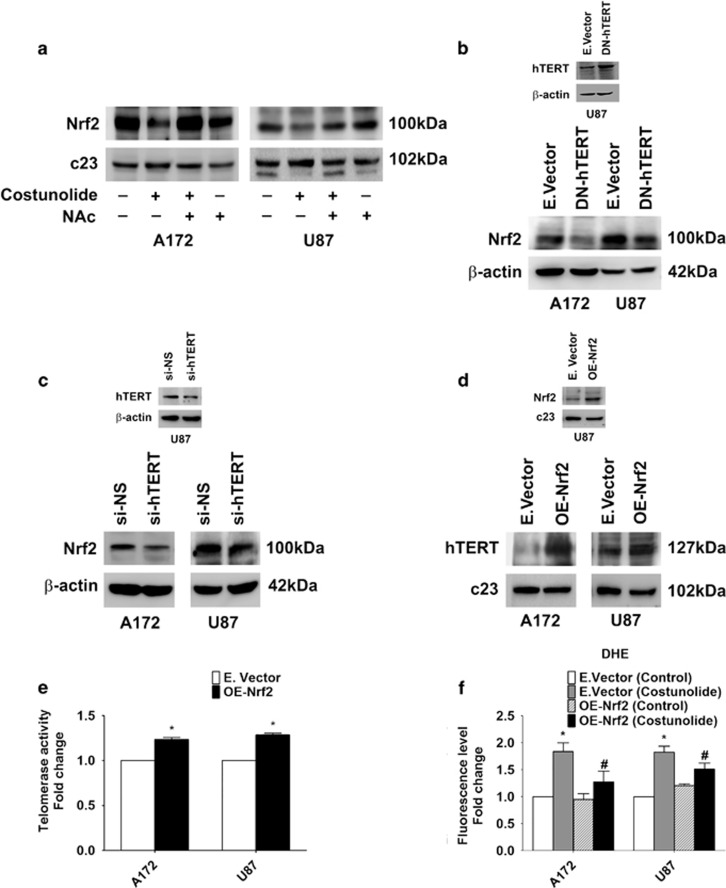Figure 2.
Existence of Nrf2-TERT regulatory loop in glioma cells. (a) Costunolide decreases Nrf2 levels in an ROS-dependent manner. Western blots showing Nrf2 levels in nuclear extracts of glioma cells treated with Costunolide in the presence and absence of NAc. (b) Transfection with DN-hTERT construct decreases Nrf2 levels in glioma cells, as demonstrated by western blot analysis. Inset confirming hTERT levels upon with transfection with DN-hTERT construct. (c) Western blot analysis demonstrating decreased Nrf2 levels in cells upon siRNA-mediated knock-down of hTERT. Inset confirming the transfection efficiency of hTERT siRNA. (d) Nrf2 overexpression increases TERT expression and (e) telomerase activity. Inset in (d) demonstrates Nrf2 expression in transfected cells. (f) Costunolide-induced ROS generation is abrogated upon Nrf2 overexpression. The graph represents DHE fluorescence intensity in cells transfected with either Nrf2 overexpression construct (OE-Nrf2) or empty vector and treated in the presence or absence of Costunolide. Fluorescence intensity values are expressed as fold change over control. Blots (a–d) are representative images of three independent experiments showing similar results. Blots were re-probed for β-actin or c23 to establish equivalent loading. Values in (e and f) represent the means±S.E.M. of three independent experiments. *Denotes significant change from control or mock-transfected group, #depicts significant change from Costunolide-treated cells (P<0.05)

